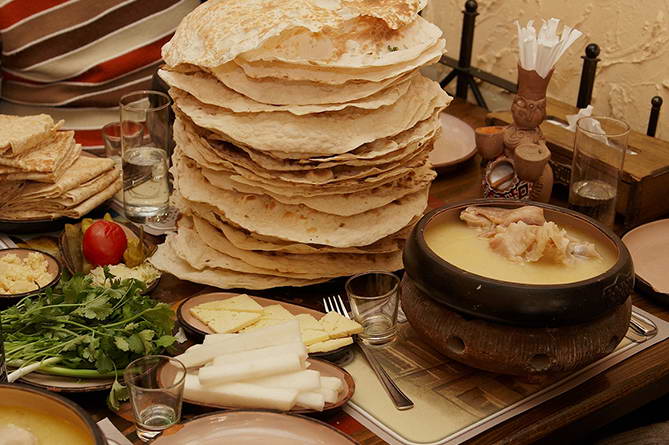
Тraditional Armenian dish – Khash
Comment are off
 Khash is a traditional Armenian dish, which quickly spread throughout the Caucasus and Transcaucasia. The word “hash” is of Armenian origin, the name of the dish is derived from the word “hashel”, which in Armenian means to cook. This fact is indicated in the historical data and the first mention of this dish dates back to the 12th century. In ancient times – the process of cooking this dish was considered ritual and the khash was prepared after the sacrifice to the gods of cattle. Khash was called a poor dish, since after carving the carcass, unnecessary parts of the animal – legs and entrails either were thrown out or handed over to the poor, who also found that miraculous application. From the “second-hand” parts of the meat, a very rich, rich and tasty soup turned out. How did Khash become so popular now and from the poor people’s dish was reclassified and got the status of an honorable and coveted dish of all strata of the population? The legend tells about it, according to which, in very ancient times, the Armenian king found himself in a remote village where he decided to spend the night and see how the poor live nearby. And so the king stayed with a peasant who treated the order of a hungry guest with an unusually tasty and hearty dish-khash. The king liked this dish so much that, having reached his chambers, he ordered to call the peasant who sheltered him to the palace and asked for the recipe for this miracle of soup. Since then, hash has become a welcome dish on the royal table. Traditional, classic Armenian Khash is prepared only from beef legs, and also a scar (most of the stomach of ruminant animals) while savoring with garlic and dry lavash. Soup is served early in the morning before breakfast or for breakfast. Hash is extremely useful for bones, it fixes and strengthens the bone tissue which unfortunately wears out over time. Hash contains a substance that restores the tissues of the musculoskeletal system of the body.
Khash is a traditional Armenian dish, which quickly spread throughout the Caucasus and Transcaucasia. The word “hash” is of Armenian origin, the name of the dish is derived from the word “hashel”, which in Armenian means to cook. This fact is indicated in the historical data and the first mention of this dish dates back to the 12th century. In ancient times – the process of cooking this dish was considered ritual and the khash was prepared after the sacrifice to the gods of cattle. Khash was called a poor dish, since after carving the carcass, unnecessary parts of the animal – legs and entrails either were thrown out or handed over to the poor, who also found that miraculous application. From the “second-hand” parts of the meat, a very rich, rich and tasty soup turned out. How did Khash become so popular now and from the poor people’s dish was reclassified and got the status of an honorable and coveted dish of all strata of the population? The legend tells about it, according to which, in very ancient times, the Armenian king found himself in a remote village where he decided to spend the night and see how the poor live nearby. And so the king stayed with a peasant who treated the order of a hungry guest with an unusually tasty and hearty dish-khash. The king liked this dish so much that, having reached his chambers, he ordered to call the peasant who sheltered him to the palace and asked for the recipe for this miracle of soup. Since then, hash has become a welcome dish on the royal table. Traditional, classic Armenian Khash is prepared only from beef legs, and also a scar (most of the stomach of ruminant animals) while savoring with garlic and dry lavash. Soup is served early in the morning before breakfast or for breakfast. Hash is extremely useful for bones, it fixes and strengthens the bone tissue which unfortunately wears out over time. Hash contains a substance that restores the tissues of the musculoskeletal system of the body.































